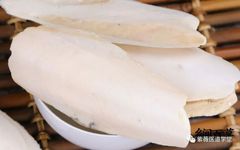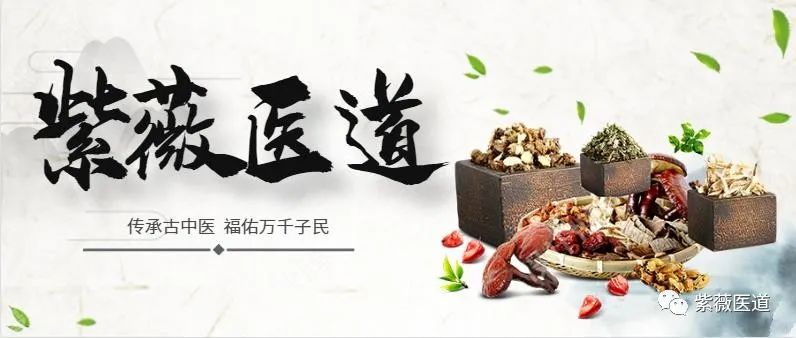
Si Wuzai Gu Yi Lu Ru Wan《素问》
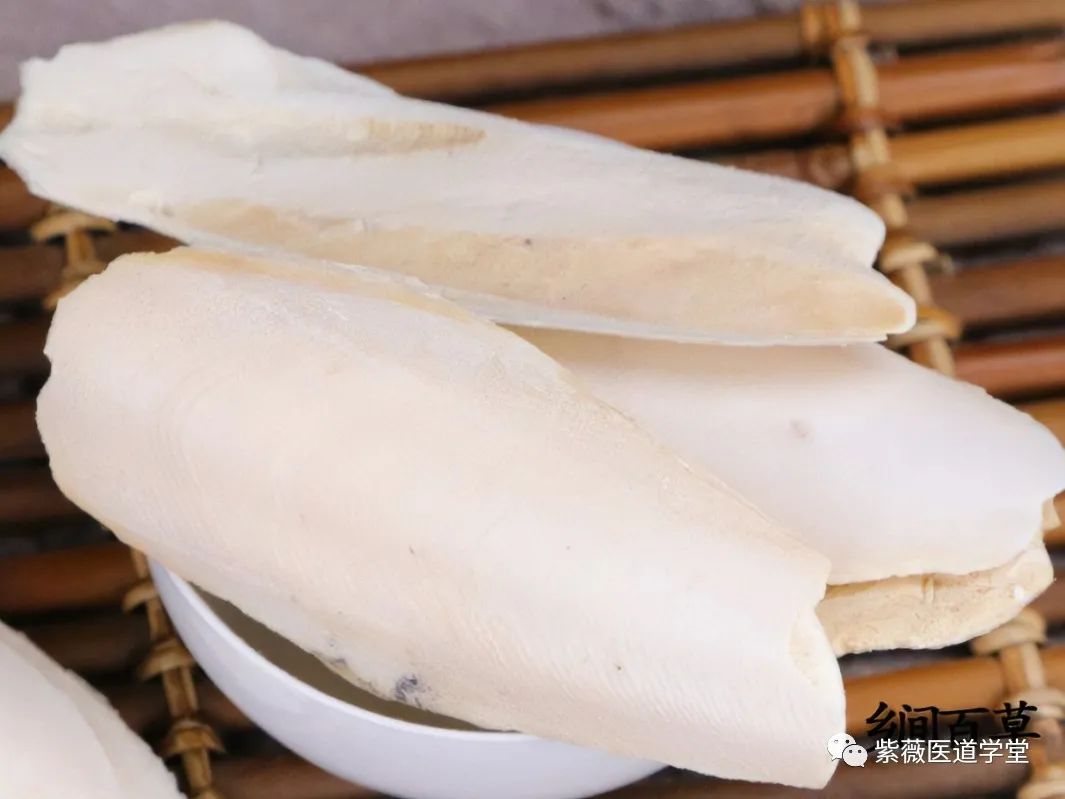
【Original Text Compilation】 The Emperor said: If there is a disease with fullness in the chest and flanks, it hinders eating, and when the disease occurs, one first smells a fishy and foul odor, produces clear liquid, and first coughs up blood, with the four limbs feeling cold, dizziness, and intermittent bleeding from the front and back, what is the name of this disease? How did it occur? Qi Bo said: The name of the disease is “blood depletion”. This occurs from a young age, with significant blood loss, such as from drunkenness in a room, leading to qi exhaustion and liver injury, hence the menstrual flow is diminished or absent. The Emperor asked: How to treat it? What method should be used? Qi Bo said: Use Si Wuzai Gu Yi Lu Ru, combine the two substances, form pills the size of small beans, take five pills after meals, and drink with abalone juice, which benefits the intestines and heals the liver. (《素问·腹中论》)
【Ingredients】 Wu Zai Gu (Sea Cucumber Bone), Qian Cao (Madder Root), Que Yao (Sparrow Egg), Abalone Juice
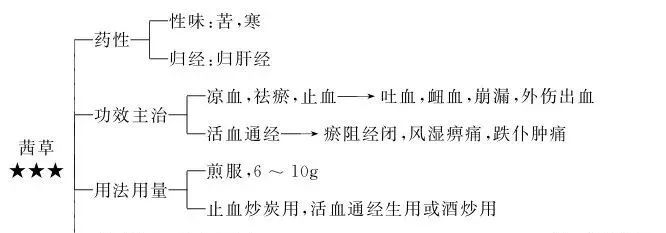
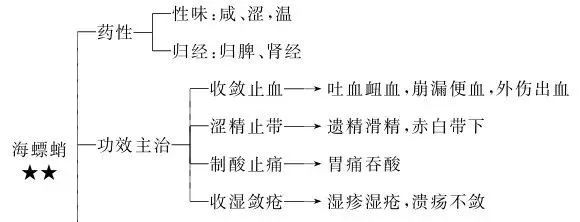
Hai Piao Xiao (Sea Cucumber Bone) — Warms and unblocks the blood vessels
【Efficacy and Indications】 Efficacy: Promotes blood circulation and regulates menstruation, nourishes essence and blood.
Indications: Fullness in the chest and flanks, poor appetite, smelling fishy and foul odors, nasal discharge of clear liquid, or conditions of amenorrhea, leukorrhea, possibly accompanied by coughing up blood, cold limbs, dizziness, bleeding from the front and back, pale or pale dark tongue, thin white coating, and a rough or deep pulse.
【Formula Analysis】 In Si Wuzai Gu Yi Lu Ru Wan, Wu Zai Gu refers to the Sea Cucumber Bone, also known as Hai Piao Xiao, which is salty and warm, descending and enters the liver and kidney meridians, primarily treating women’s red and white leukorrhea and blood depletion amenorrhea; Lu Ru, which is the modern Qian Cao, is sour and salty, enters the liver and moves blood, capable of both promoting blood circulation and stopping bleeding. Que Yao, with a sweet and warm flavor, can tonify kidney yang, nourish essence and blood, and regulate the Chong and Ren meridians. Abalone juice is also a substance rich in blood and flesh, which, besides nourishing, can enter the liver to disperse blood, guiding the medicine into the womb. The combination of these herbs achieves both unblocking and nourishing, with unblocking within nourishing and nourishing within unblocking.
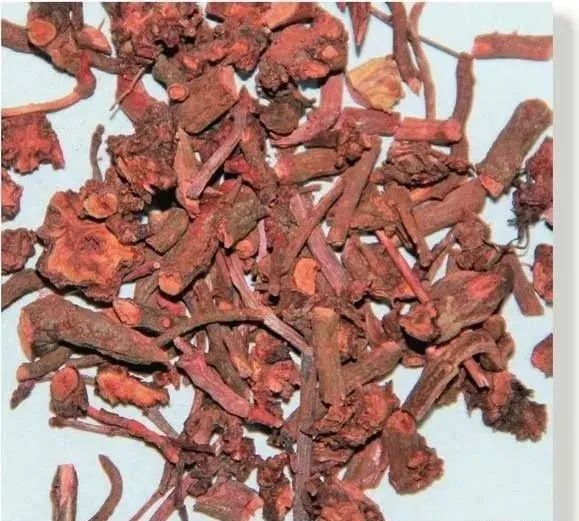
【Clinical Reports】 1. Amenorrhea: Using Si Wuzai Gu Yi Lu Ru Wan with modifications (Wu Zai Gu, Qian Cao, Ejiao, Xianhecao, Shan Yao, Shan Zhu Yu, Sheng Pu Huang) for treating patients with amenorrhea has shown good results. 2. Post-abortion uterine bleeding: Si Wuzai Gu Yi Lu Ru Wan shortens the duration of uterine bleeding and reduces the amount of bleeding after medical abortion. 3. Irregular menstruation. 4. Gynecological tumors. 5. Persistent lochia after childbirth. 6. Leukorrhea. 7. Prolonged menstrual periods. 8. Amenorrhea. 9. Menstrual irregularities. 10. Hemorrhoids.
【Case Studies】
1. Blood loss: A woman suffering from chronic blood loss, with emaciation, upon eating, smells fishy, produces clear liquid, and experiences abdominal distension, this is a symptom of blood depletion, with deficiencies in the liver, lung, spleen, and stomach. Using Ba Zhen Tang and Wu Zai Gu Wan, after two months of combined treatment, menstruation resumed, and over a hundred doses later, she was stable. (《校注妇人良方》)
2. Leukorrhea: Zhu, suffering from amenorrhea for two years, initially had leukorrhea, which began half a month before the onset of the disease, now every summer during the Shen and You hours, the leukorrhea must occur. This is due to the yin within the yang, with yin deficiency causing yang to move, affecting the Chong and Ren meridians. The physician only used astringent agents for temporary relief, without addressing the underlying issue. Hai Piao Xiao, Abalone, Qian Cao, Sheng Tu Si Zi, Shi Ke, Guang Lian Rou were used, along with Wu Zai Gu Wan. (《临证指南医案》)
3. Excessive menstruation: Renowned TCM physician Li Xiangyun treated a woman named Zhang, who had excessive menstruation for several years, with each menstrual period lasting over ten days. This time, after five days of menstruation, the flow was heavy, red with small blood clots, accompanied by dizziness, fatigue, thin tongue coating, and a fine pulse. The treatment aimed to strengthen the spleen and qi, stabilize and stop the bleeding. Wu Zai Gu, Long Gu, Da Ji, Xiao Ji each five qian, Qian Cao two qian, Dang Shen, Huang Qi, Bai Zhu, Bai Shao, Chao Chen Pi, Chao Xiang Fu each three qian, Mu Li (pre-cooked) one liang. After three doses, menstruation normalized, as the excessive bleeding had caused blood deficiency, leading to dizziness and lumbar soreness. Follow-up treatment focused on strengthening the spleen and nourishing blood.
4. Persistent lochia: Liu, a woman, had persistent lochia for over two months after childbirth, with dark red color, no blood clots, mild abdominal pain, no lumbar soreness, and insufficient breast milk. Thin tongue coating, fine pulse. The patient had previously taken blood-activating and stasis-removing formulas like Shenghua Tang and Yimucao paste, as well as qi and blood tonics, all without effect. Gynecological examination showed a normal uterus without tenderness. The treatment aimed to tonify qi and blood, stabilize and stop bleeding. Wu Zai Gu, Chao Bai Zhu, Da Ji, Xiao Ji each five qian, Dang Shen, Sheng Di each four qian, Qian Cao, Huang Qi, Shi Liu Pi each three qian, Mu Li (pre-cooked) one liang. After three doses, the lochia stopped.
5. Leukorrhea: Zhang, a woman, had a history of excessive leukorrhea, white like mucus, fatigue, dizziness, and sometimes lumbar soreness, with a significant increase in leukorrhea after fatigue. Thin tongue coating, fine pulse. The treatment aimed to strengthen the spleen, eliminate dampness, stabilize and stop leukorrhea. Wu Zai Gu, Chao Bai Zhu, Sang Ji Sheng each five qian, Qian Cao two qian, Dang Shen, Long Gu each four qian, Huai Shan Yao, Mu Li (pre-cooked) each one liang, Che Qian Zi three qian. After five doses, the leukorrhea significantly decreased, and to consolidate the effect, another five doses were taken, leading to complete cessation of leukorrhea.
6. Prolonged menstrual periods: Yu, a 20-year-old unmarried student, was first diagnosed on November 8, 2005. Menstruation had been prolonged for ten days without cessation. She started menstruating at 13, with a cycle of 28-30 days, but in the past year, the duration had significantly increased, lasting 10-12 days. The menstrual flow was slightly less, dark purple with blood clots. This time, menstruation began on October 30 and had not ceased, accompanied by mild lower abdominal pain, lumbar soreness, normal appetite, and normal urination and defecation. The tongue was dark purple, and the pulse was wiry and rough. Ultrasound showed no abnormalities in the uterus and bilateral appendages. Diagnosis: Prolonged menstrual periods. The pattern was kidney deficiency and blood stasis, treated with kidney tonification and blood activation, stabilizing the Chong and regulating menstruation. The formula used was Si Wuzai Gu Yi Lu Ru Wan with modifications: Hai Piao Xiao 30 grams, Qian Cao 15 grams, Pu Huang Tan 12 grams. Treatment started one week before menstruation and continued until the fifth day of menstruation, taking one dose daily, and continued for three menstrual cycles. Menstruation stopped after seven days, and all symptoms disappeared. Follow-up for one year showed no recurrence.
7. Amenorrhea: Renowned TCM physician Zhu Nansun treated a 27-year-old woman on June 16, 2009. She started menstruating at 12, but after the college entrance examination in 2000, her menstruation ceased, diagnosed with premature ovarian failure, and had been intermittently treated with both Western and Chinese medicine. Ultrasound examination showed normal size of the left ovary, but the right ovary was not visible. Menstruation could now occur naturally, but the cycle was irregular, with the last menstruation on June 15 occurring half a month early, with a small amount of flow, fine wiry pulse, dark tongue, thin greasy coating, with stasis and slight tooth marks. The pattern was kidney qi deficiency and disorder of the Chong and Ren meridians, treated with kidney tonification and qi enhancement to regulate the Chong. Wu Zai Gu, Qian Cao, Shu Di, Dan Pi each 15 grams, Dang Gui, Huang Qi, Dang Shen, Dan Shen each 20 grams, Tu Si Zi, Fu Pen Zi, Jin Ying Zi each 12 grams. After 12 doses, menstruation resumed without early onset, and the flow increased by July 19. [5] Infertility: Renowned TCM physician Yue Meizhong treated a woman in Indonesia who had been married for 20 years without conceiving. Western medicine diagnosed her with “left fallopian tube stenosis and obstruction”. After careful consideration, he prescribed Si Wuzai Gu Yi Lu Ru Wan, and after two months, an X-ray examination indicated that the left fallopian tube obstruction had been resolved.
8. Cervical cancer: Teacher Wang Sanhu often encounters difficulties in determining the syndrome type for cervical cancer, so he uses Si Wuzai Gu Yi Lu Ru Wan (Wu Zai Gu, Qian Cao) as the main formula, as Wu Zai Gu softens and disperses masses, with unblocking within astringency, and Qian Cao promotes blood circulation and stops bleeding, with astringency within unblocking. It has been proven that this ancient formula can be used as a medicinal formula for diagnosing cervical cancer. Clinical modifications include: for those with pain as the main symptom, add Yan Hu Suo, Jiu Jie Cha, Xu Changqing, Xia Tian Wu, and Lu Feng Fang; for larger masses with acceptable constitution, add San Ling, E Zhu, Chuan Shan Jia, and Mao Zhua Cao; for those with heavy leukorrhea, add Fu Ling, Zhu Ling, Huang Qi, and Yi Mu Cao; for bloody leukorrhea, heavily use Xianhecao, and add Xue Yu Tan, Ou Jie Tan, Jing Jie Tan, and Di Yu; for painful urination, add Di Long, Zhi Zi, Pu Gong Ying, and Hu Po; for constipation, add He Shou Wu, Rou Cong Rong, Da Huang, and Mang Xiao.
【Clinical Modifications】 1. In this formula, considering the rarity of abalone and the difficulty in obtaining sparrow eggs, some scholars have replaced them with turtle shell, soft-shelled turtle shell, Cistanche, and deer antler, which are beneficial for nourishing yin and warming yang, for clinical reference. 2. The dosage ratio of this formula does not need to be restricted by the ratio of Wu Zai Gu and Qian Cao in《素问》, but should be flexibly applied according to the pattern of deficiency and excess. According to the experience of renowned TCM physician Yao Songyue: for equal deficiency and excess, use Wu Zai Gu and Qian Cao (raw) each 9 grams; for more deficiency than excess, use the former 12-15 grams and the latter (raw) 6-9 grams; if there is excessive bleeding and no stasis, Qian Cao should be slightly stir-fried or charred to enhance its hemostatic ability; for more excess than deficiency, use the former 9 grams and the latter (raw) 9-12 grams, or use only Qian Cao without Wu Zai Gu, which is also common practice. [8] 3. Modern renowned physician Zhang Xichun skillfully uses Si Wuzai Gu Yi Lu Ru Wan, modifying it for treating amenorrhea and leukorrhea. For example: ① An Chong Tang: Hai Piao Xiao four qian (finely crushed), Qian Cao three qian, Bai Zhu six qian (stir-fried), Sheng Huang Qi six qian, Sheng Long Gu six qian (finely crushed), Sheng Mu Li six qian (finely crushed), Da Sheng Di six qian, Sheng Hang Shao three qian, Chuan Xu Duan four qian. Efficacy: Tonifies qi and lifts, stabilizes and astringes. Indications: Women with excessive and prolonged menstruation, or those with irregular bleeding. ② Gu Chong Tang: Hai Piao Xiao four qian (remove shell, crush), Qian Cao three qian, Bai Zhu one liang (stir-fried), Sheng Huang Qi six qian, Duan Long Gu eight qian (finely crushed), Duan Mu Li eight qian (finely crushed), Yu Rou eight qian (remove pits), Sheng Hang Shao four qian, Zong Bian Tan two qian, Wu Bei Zi five fen (finely crushed, taken with medicinal juice). Efficacy: Nourishes qi, strengthens the spleen, stabilizes Chong and stops bleeding. Indications: Blood loss due to qi deficiency and instability of the Chong meridian. ③ Qing Dai Tang: Hai Piao Xiao four qian (remove shell, crush), Qian Cao three qian, Sheng Shan Yao one liang, Sheng Long Gu six qian (finely crushed), Sheng Mu Li six qian (finely crushed). For red leukorrhea, add Bai Shao and Ku Shen each two qian; for white leukorrhea, add Lu Jiao Shuang and Bai Zhu each one qian. Efficacy: Strengthens the spleen, stabilizes and stops leukorrhea. Indications: Women with red or white leukorrhea.
Si Wuzai Gu Yi Lu Ru Wan is a representative formula for nourishing essence and promoting blood circulation, also praised as the first formula for regulating and tonifying the extraordinary meridians. Its functions include nourishing the liver and kidneys, enhancing essence and blood, unblocking meridians, dispelling blood stasis, and regulating the Chong and Ren meridians. It is widely used clinically, especially for treating gynecological diseases caused by blood depletion and essence deficiency, such as amenorrhea, infertility, leukorrhea, and various women’s disorders. The Chong meridian is the sea of blood, and the Ren meridian governs the womb. When the functions of the Chong and Ren meridians are normal, menstruation occurs on time, and menstrual cycles are regular. If the liver and kidneys are damaged, affecting the fullness of the Chong and Ren meridians, it can lead to various disorders related to menstruation, leukorrhea, pregnancy, and childbirth. Throughout history, many physicians have applied this formula, especially modern renowned physician Zhang Xichun, who, influenced by the principle of “nourishing and unblocking together,” has created many new formulas. For example, Li Chong Tang and Li Chong Wan for treating masses, although these formulas do not use Wu Zai Gu and Qian Cao, he pointed out in “Medical Records of Traditional Chinese Medicine and Western Medicine: Treating Women’s Diseases” that “the formula Si Wuzai Gu Yi Lu Ru Wan is originally for both men and women, a good formula for regulating and tonifying qi and blood, and this formula (referring to Li Chong Tang and Wan) secretly follows the intention of the ‘Neijing’.” Other new formulas, such as An Chong Tang, Gu Chong Tang, and Qing Dai Tang, all select these two ingredients. He stated: “Wu Zai Gu is Hai Piao Xiao, and Lu Ru is Qian Cao, these two herbs are for unblocking, yet they also possess astringent properties.” The four herbs in the formula combine to achieve both unblocking and astringency; those that can unblock also have astringent properties, and those that can astringe also have unblocking properties. This reveals the mystery of the nourishing and unblocking nature of this formula. It can be said that these new formulas have broadened the applicability of this formula, providing flexible and convenient methods and ideas for clinical treatment and prescription.

